Bruce Lee
“Dialogue And Some Introduction”
- · You know what I want to think of myself? As a human being. because, I mean I don't want to be like "As Confucius say," but under the sky, under the heavens there is but one family. It just so happens that people are different.
- · When you're talking about fighting, as it is, with no rules, well then, baby you'd better train every part of your body!
- · All types of knowledge, ultimately self knowledge.
- · A good martial artist does not become tense but ready.
- · Use only that which works, and take it from any place you can find it.
- · Forget about winning and losing; forget about pride and pain.
- · Don't get set into one form, adapt it and build your own, and let it grow, be like water.
I have spent the last eleven years submerged in the study of martial arts. My emphasis has always been on Bruce Lee and his art of Jeet Kune Do. Through his example, I have extended my studies to many different arts, philosophies, etc. Through these studies, I have come across several instances of passages, ideas, and philosophies that have been attributed to Bruce Lee that were clearly someone else's work.
I would like to say that I in no way intend this to be a slap in the face of the late Bruce Lee. On the contrary, I feel that Bruce Lee has done more for the martial arts in the 20th century than has anyone- period. I have also tried to follow his teachings for the last 11 years as best that I can. My problem arises by what is attributed to the originality of Bruce Lee. What were actually his own ideas as opposed to something just regurgitated from his vast library?
Bruce Lee was a very well-read man, with over 2000 books in his personal library. When the Tao of Jeet Kune Do was published as a collection of his notes, many mistook them to be all his own original writings. Many still do. But according to Ted Wong, (long time friend and student of Bruce Lee) when questioned in an interview published by Karate International magazine stated: "Mostly, it is just his philosophy and his personal notes. Actually it's more like a diary, with notes on different arts..."
Bruce Lee is said to have been an obsessive note taker and the Tao of Jeet Kune Do is a published version of his notes. The notes range from personal ideas to passages in books to drawings. What causes problems is that there are few distinctions made between original and copied material. With the exception of a handful of cited copyrighted sources at the beginning of the Tao of Jeet Kune Do, most are not acknowledged. This is also true of nearly all of the countless Bruce Lee books on the market today. To make matters more complicated, Bruce Lee himself embellished on certain passages, thus making the passages sound like original Bruce Lee works.
The following examples were found purely accidentally through my personal studies. I have focused mainly on written material, but this movie scene seemed to be an ideal place to start.
Do you remember the scene in Enter the Dragon where Lee's character stated his style was the style of "Fighting Without Fighting" and proceeded to lure the bully into boarding the small boat? He then untied the boat and set it adrift. This scene was based on an anecdote of a well-known Japanese swordsman named Tsukahara Bokuden (1490-1571). As the story goes, Bokuden was crossing a lake one day when confronted by another swordsman who was bent on displaying his skill. When Bokuden was asked what his style was, he replied, "The mutekatsu ryu." Bokuden explained that this style was the highest form of swordsmanship, for it relied on no hands. The other swordsman grew angry and demanded a demonstration. Bokuden suggested an island so no innocent people would be hurt. When the boat reached the shore, the other swordsman preceded Bokuden, who appeared to follow, but pushed the boat back out into the lake. Bokuden then spoke in a calm voice saying that this is how mutekatsu ryu defeats the enemy.
Now I understand that this is just a scene from a movie, but it has been stated that Bruce Lee liked to inject higher philosophical principles into his movies and this scene has been quoted many times to exemplify Jeet Kune Do's highest ideals. I think it is interesting to see where it came from, don't you?
Now here's one that applies directly to the physical techniques of his art of Jeet Kune Do. The following excerpts refer to the footwork involved in reaching your opponent.
The Tao of Jeet Kune Do
"...It is a constant, rapid shifting of ground, seeking the slightest closing which will greatly increase the chances of hitting the opponent."
Sports Illustrated: Book of Fencing
"It is a constant rapid shifting of ground, seeking the slight closing of distance, which will greatly increase the chances of hitting the opponent."
Most JKD people are aware that Bruce Lee borrowed many ideas from western fencing, but did you know that this was an almost direct quote?
The copyright on the Sports Illustrated: Book of Fencing is 1960, 1962. It was published in 1962. Now Bruce Lee would have been in Seattle at this time and still attending Edison Technical School. It is very doubtful that Lee would have written this first. Also, Lee was still very much Wing Chun oriented in his fighting style. It was not until the late sixties that Lee coined the term "Jeet Kune Do", which we have been told consists mainly of Wing Chun, boxing, and western fencing.
Here are a couple of examples where Bruce Lee took someone else's words and either simply inserted "Jeet Kune Do" or changed it slightly to accommodate an unarmed combat art.
One that I have heard repeated many times over the years and Bruce Lee even included in a personal letter to a fan named "John", in only slightly different wording, is:
The Tao of Jeet Kune Do
"With all the training thrown to the wind, with a mind perfectly unaware of its own working, with the self vanishing nowhere, anybody knows where, the art of Jeet Kune Do attains its perfection."
Yagyu Tajima no kami Munenori (1571-1646) Japanese swordsman
"...When this is realized, with all the training thrown to the winds, with a mind perfectly unaware of its own workings, with the self vanished nowhere anybody knows, the art of swordsmanship attains its perfection and one who has it is called a meijin."
This was written over 300 years ago! It appears to be an adopted philosophy that should be credited to Yagyu Tajima no kami Munenori, not Bruce Lee.




































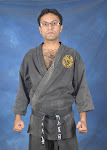












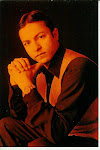

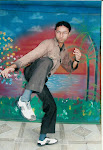
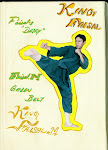

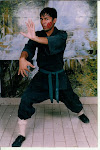
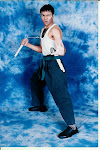

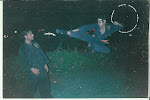
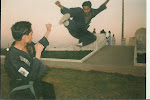








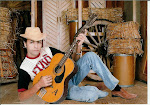
































No comments:
Post a Comment